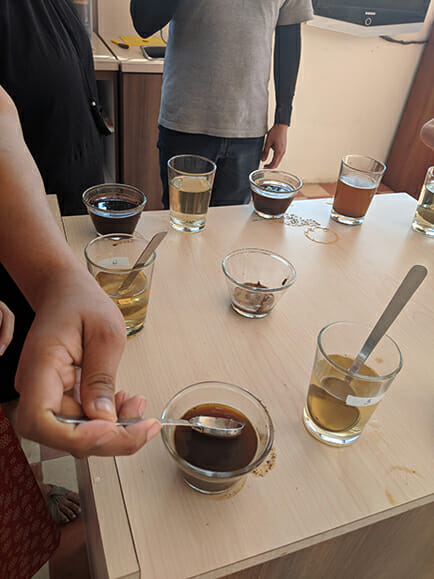Have you ever gone to a lovely specialty coffee cafe and felt completely out of your depth just looking at the variety of choices you’re presented with? Light, medium, or dark roast? Single origin or a blend? Do I prefer South American or African coffees? What is stone fruit and how does this coffee taste like it?
My name is Rhi, and I joined the MistoBox team a year ago and came in with a deep and obsessive love for coffee, but only a basic understanding of its complexity. What I lacked in experience and knowledge though, I made up for with enthusiasm to learn. Now coffee is my job and I’ve had the chance to sample and learn from some of the best roasters in the country who supply the incredible variety of coffees we offer. Even still, getting up to speed and understanding something as basic as tasting notes has been a struggle for me. Fortunately, last month I found myself in Colombia’s QuindÍo region, one of the country’s primary coffee-growing regions, and was able to participate in my first cupping experience. I wanted to share my experience with others who may be starting out or feel intimidated at times by specialty coffee lingo. Coffee is a magical, dynamic beverage that gives life, and whether you enjoy it on occasion or daily, we at MistoBox want to help you feel comfortable and empowered to truly understand and appreciate it better.
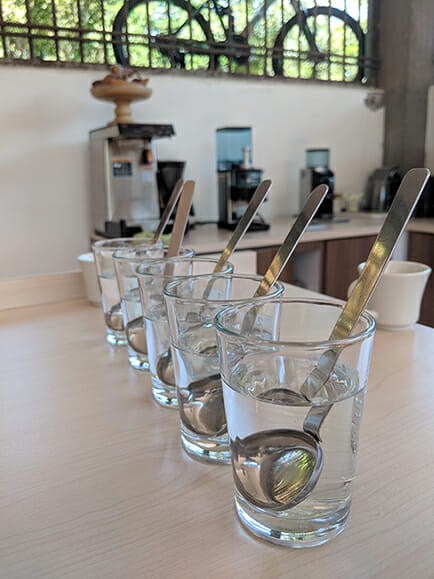
Why was this necessary?
This workshop was great for me as a beginner because it was a setting where I could try multiple samples of coffee side by side, and with the guidance of a professional, start to train my palate to recognize differences between them. By the end of this 3-hour introductory class, I had a vastly different perception of a beverage I’d been drinking for most of my life and finally felt like it was more accessible to me.
How to taste coffee- it starts with smell
The biggest challenge I’ve had when it comes to tasting coffee, wine, and food has always been identifying distinct smells and tastes. Fortunately, I had a primer on how to start to train my palate and build a coffee tasting vocabulary, so I didn’t start from zero. In this workshop, we used the Le Nez du Cafe Aroma Kit which comes with 36 distinct aromas that constitute the various essences of coffee. We were tested on 8 numbered vials with clear liquids in each and asked to identify the smells. Here are my results:
| Vial # | My Guess | Actual Smell |
|---|---|---|
| 17 | Apricot | Apple |
| 12 | Honeysuckle | Coffee Blossom |
| 15 | Raspberry | Lemon |
| 1 | Rotten Fruit | Earth |
| 25 | Caramel | Caramel |
| 13 | Sesame | Coffee Pulp |
| 23 | White Wine | Malt |
| 36 | Skunk | Rubber |
Obviously, I didn’t get top marks, but being able to identify and differentiate these notes is essential to better appreciate what’s in your cup. You don’t need the smelling kit to work on this. Simply go to your local market and be intentional about familiarizing yourself with the smells of the fruit, herbs, flowers, and spices there. Have a week where you focus on citrus fruits and the next move on to berries and so on. The more you practice and become aware of the distinctions, the better you’ll be able to pick up a raspberry vs blackberry note in your next bag of coffee.
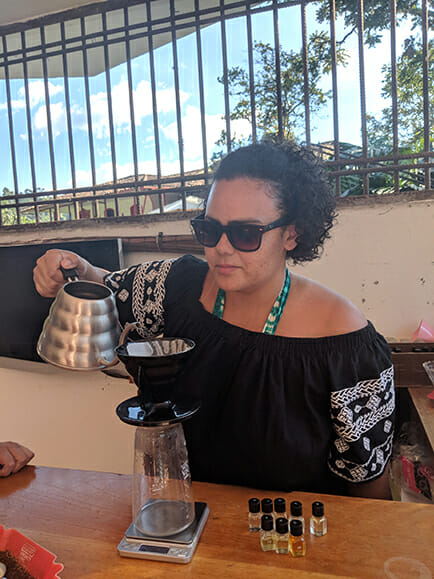
Next, we moved on to smelling real coffee. When coffee grounds are dry the smell is called fragrance, and when hot water is added and extraction begins, the smell is called aroma. The transformation of what you can smell here changes radically from fragrance to aroma. In a single sample, I would smell earthiness and roasted almonds and then the aroma would change to something floral and medicinal. All of this, it was explained, is part of the process of tasting and appreciating coffee. Every cup of coffee we freshly grind has the potential for this huge transformational moment. It’s up to us as drinkers to appreciate it.
The Tasting
At last, it was time to taste. There were 4 main tastes we were looking for in this beginner’s cupping session: sweet, sour, salty, and bitter. I expected this part to be easier as I have a lot of practice tasting coffee, but it was harder than expected. We were given shot glasses of clear liquid and were asked to hold our noses while we sipped it to try to identify which of the four tastes we could pick up using just our tongue. Not being able to use smell, a key element to taste, combined with the fact that a sample could be more than one thing made this task difficult. But again, it got easier with practice. Trying to identify these 4 basic tastes helped me get to the more complex tasting notes that seemed impossible earlier. For example, a sour flavor could be citrus. Maybe it’s a little bitter too which could be lemon. We were encouraged to think of each taste as a mystery that needed to be solved. These 4 main tastes give us a place to start.
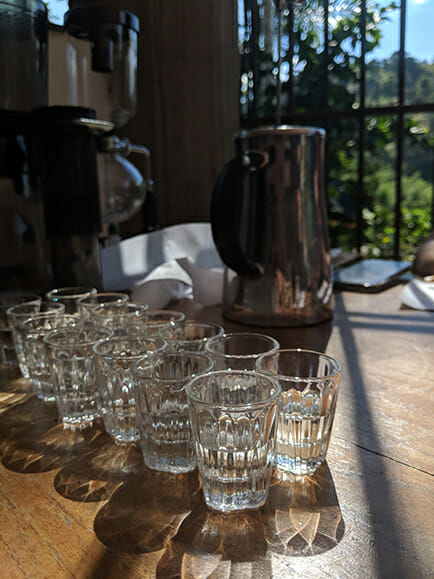
The “Slurp”
Finally, we were ready to sample coffee. If you’ve never cupped or seen it in action, prepare for the “slurp” which can be jarring if you’re not ready for it. To properly taste coffee, you’ll place a small amount of coffee on your cupping spoon and breath in as it comes to your lips. This ushers the coffee into your mouth in a way that gives you a more powerful flavor and distributes it across your palate. Making sure you have the right slurp can be distracting so I’d recommend practicing beforehand. For the first couple of samples, I was more worried about having the right sounding slurp than about deciphering the nuances of each cup, so it was a bit distracting. Once I got my head in the game though, I could actually taste some differences in each sample. The easiest distinction for me was light, medium, and dark roasts and not just because of the color of the cup. I could taste more delicate and complex flavor notes in the lighter roasts, and in the darker roasts the coffee took on a more full-bodied and bolder flavor due to the coffee being exposed to more heat. These aren’t groundbreaking coffee notes, but for me, someone whose been pretending to get it all my life, this was a huge shift.
Life Since I Cupped
I’m not going to say that cupping has fundamentally changed my life, but I can say that this experience has changed the way I think about and drink coffee. I LOVED coffee before, but now it’s a game I can play against myself. I’m genuinely enjoying getting better acquainted with a beverage I consume daily and having had this experience of learning to cup in the place where most Colombian coffee is grown has helped me feel closer to the entire system that grows, processes, and roasts it. At the end of the day, that’s what we’re all about at MistoBox- helping people feel more connected to this magical plant grown thousands of miles away but ends up in our kitchens to give us life every morning.
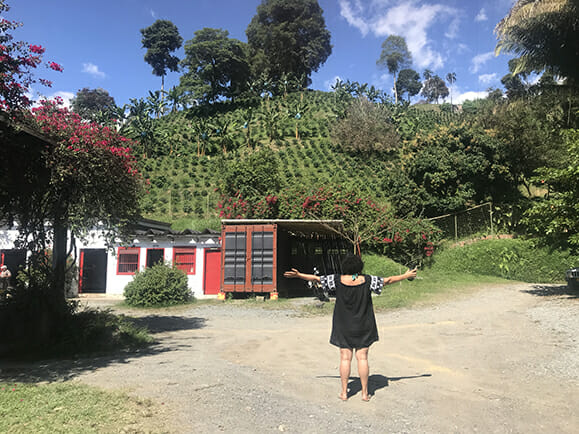
Check out our awesome coffee cocktail article and the perfect cold brew cup!


